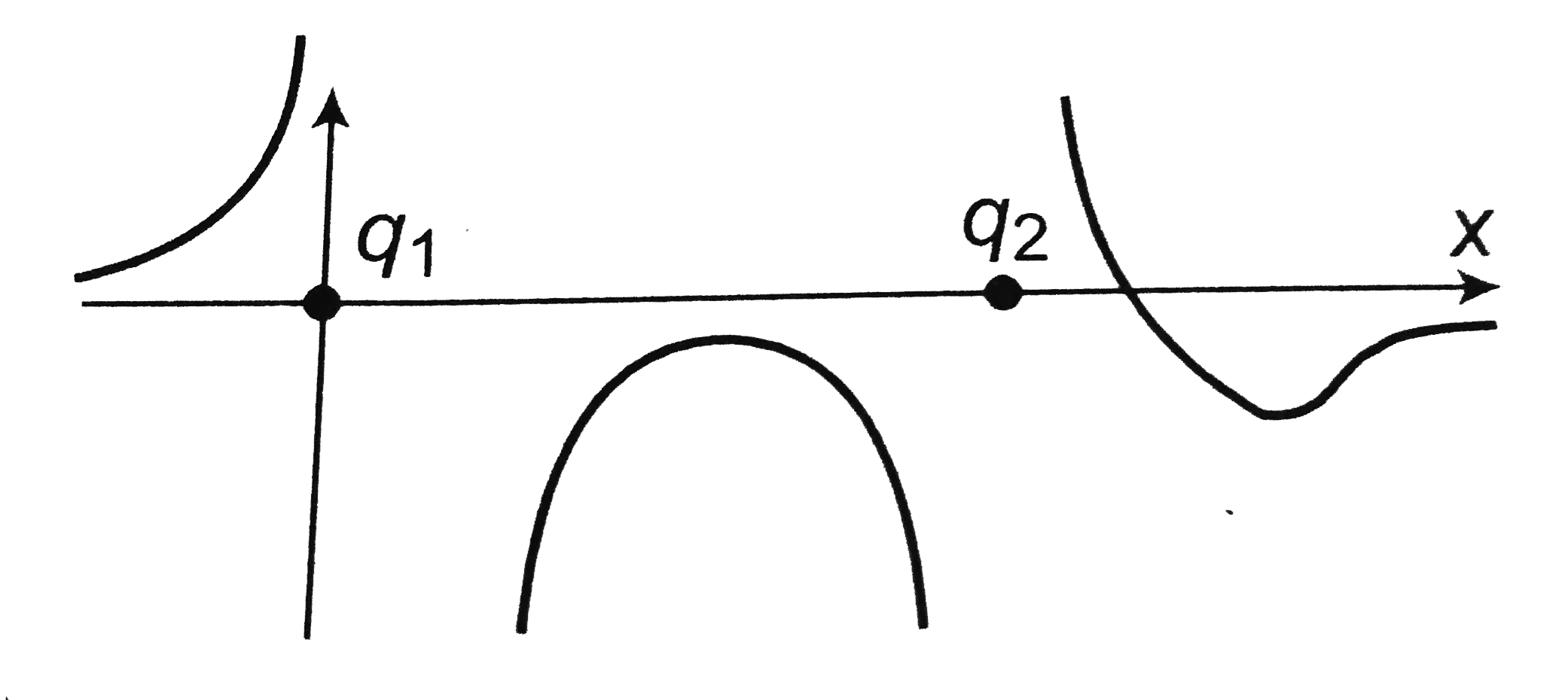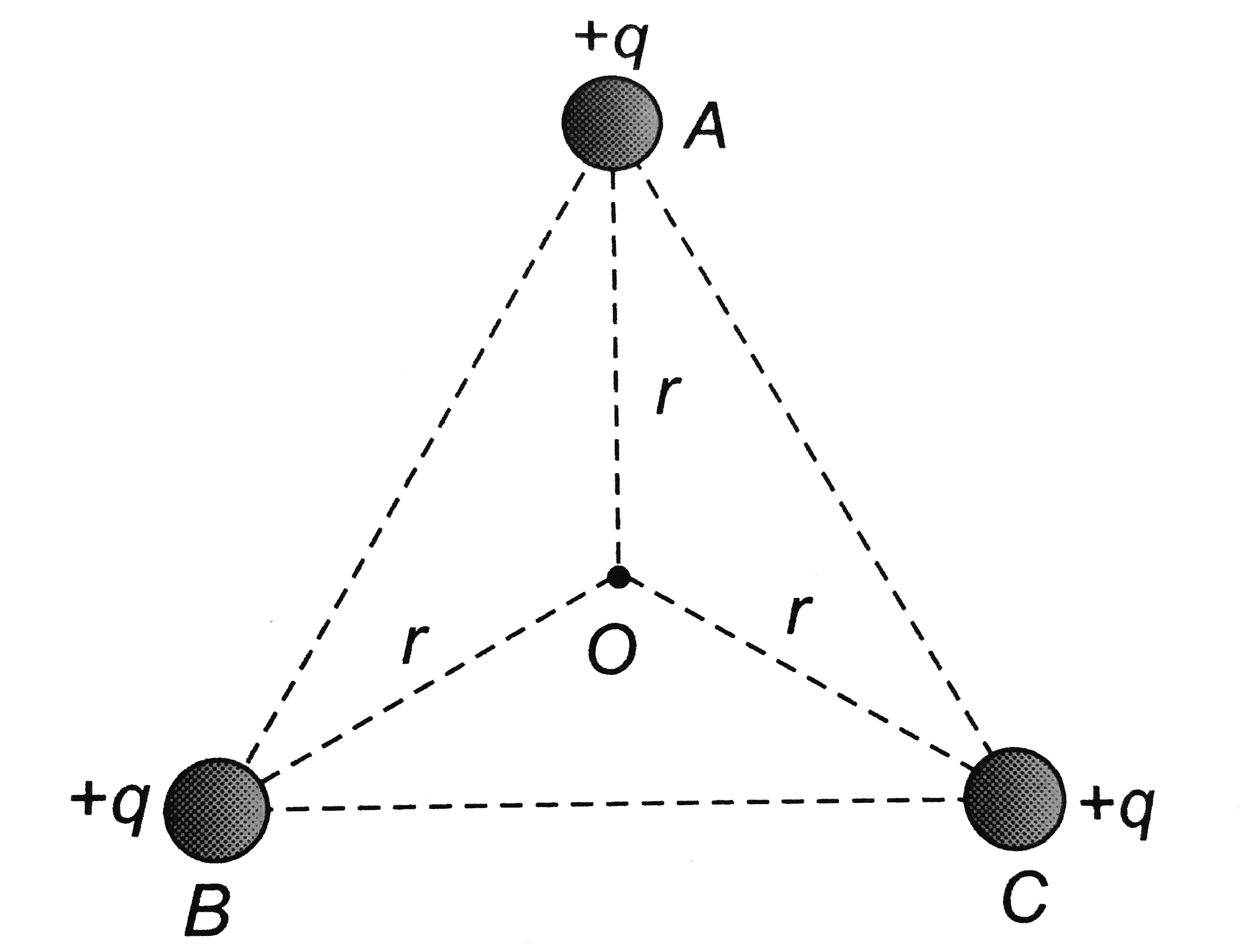Complete Solutions to Electric Field Due To Point Charge of chapter ELECTRIC CHARGE, FIELD & FLUX of Class 12 book with complete answers and questions
| Class 12 | PHYSICS |
| Chapter | ELECTRIC CHARGE, FIELD & FLUX |
| A2Z | Electric Field Due To Point Charge |
| Number Of Questions | 25 |
| Academic Year | 2023-24 |
Two point charges`(+Q)` and `(-2Q)` are fixed on the `X`-axis at position `a` and `2a` from origin respectively. At what position on the axis, the resultant electric field is zero
03:16View SolutionTwo charges `+5mu C` and `+10 mu C` are placed `20 cm` apart. The net electric field at the mid-point between the two charges is
03:16View SolutionThe distance between the two charges `25 mu C` and `36 muC` is `11 cm`. At what point on the line joining the two, the intensity will be zero
04:08View SolutionTwo charges `+4e` and `+e` are at a distance `x` apart. At what distance,a charge `q` must be placed from charge `+e` so that is in equilibrium
02:49View SolutionTwo point charges `+8q` and `-2q` are located at `x=0` and `x=L` respectively. The location of a point on the x axis at which the net electric field due to these two point charges is zero is
04:16View SolutionTwo point charges `Q` and `-3Q` are placed at some distance apart. If the electric field at the location of `Q` is `E` then at the locality of `-3Q`, it is
02:13View SolutionAn infinite number of electric charges each equal to `5` nano-coulomb (magnitude) are placed along `X`-axis at `x=1 cm, x=2 cm,x=8cm`……and so on. In the setup if the consecutive charges have opposite sign, then the electrical field in Newton/Coulomb at `x=0` is `(1/(4piepsilon_(0))= 9xx10^(9)N-m^(2)//C^(2))`
07:05View SolutionTwo point charges `-q` and `+q//2` are situated at the origin and the point `(a,0,0)` respectively. The point along the `X`-axis where the electric field Vanishes is
05:02View SolutionTwo point charges `+4q` and `+q` are placed at a distance `L` apart. `A` third charge `Q` is so placed that all the three charges are in equilibrium. Then location. And magnitude of the third charge will be
08:11View SolutionTwo ideantical point charges are placed at a separation of `d`. `P` is a point on the line joining the charges, at a distance `x` from any one charge. The field at `P` is `E, E` is plotted against `x` for value of `x` from close to zero to slightly less then `d`. Which of the following represents the resulting curve
05:05View SolutionTwo charges `q_(1)` and `q_(2)` are kept on `x`-axis and electric field at different points an `x`-axis is plotted against `x`. Choose correct statement about nature and magnitudes of `q_(1)` and `q_(2)`
 09:10View Solution
09:10View Solution`ABC` is an equilateral triangle. Charges `+q` are placed at each corner. The electric intensity at `O` will be
 02:00View Solution
02:00View SolutionEqual charges `q` are placed at the vertices `A` and `B` of an equilatral triangle `ABC` of side `a`. The magnitude of electric field at the point `C` is
03:39View SolutionTwo charges each equal to `eta q(eta^(-1) lt sqrt(3))` are placed at the corners of an equilateral triangle of side `a`. The electric field at the third corner is `E_(3)` where`(E_(0)= q//4piepsilon_(0)a^(2))`
04:01View SolutionIn a regular polygon of `n` sides, each corner is at a distance `r` from the centre. Identical charges each of magnitude `q` are placed at corners. The field at the centre is
04:17View SolutionThree identical points charges, as shown are placed at the vertices of an isosceles right angled triangle. Which of the nembered vectors coincides in direction with the electric field at the mid-point `M` the hypotenuse
 01:25View Solution
01:25View SolutionIn the following four situations charged particles are equal distance from the origin. Arrange them the magnitude of the net electric field at origin greatest first
 04:35View Solution
04:35View SolutionFive point charge each having magnitudes `q` are placed at the corner of hexagon as shown in figure. Net electric field at the centre `'O'` is `vec(E )`. To get net electric field at `'O'` be `6 vec(E )`, charge placed on the remaining sixth corner should be
 04:00View Solution
04:00View SolutionFigure below show regular hexagons with charges at the vertices. In which of the following cases the electric field at the center is not zero

 03:33View Solution
03:33View SolutionCharges `q, 2q,3q` and `4q` are placed at the corners `A,B,C` and `D` of a square as shown in the following figure. The directon of electric field at the centre of the square is along
 02:21View Solution
02:21View SolutionInfinite charges of magnitude `q` each are lying at `x= 1,2,4,8….meter` on `X`-axis. The value of intensity of electric field at point `x=0` due to these charges will be
02:55View SolutionCharges `q` is uniformly distributed over a thin half ring of radius `R`. The electric field at the centre of the ring is
07:13View Solution`1 g` of cork with a charge `1 mu C` floats motionless `1 cm` above a large uniformly charged plane near the surface of the earth. The surface charge density of the plane, assuming it to be an infinite sheet,is
03:13View SolutionTwo concentric rings, one of radius `R` and total charge `+Q` and second of radius `2R` and total charge `-sqrt(8)Q`, lie in `x-y` plane (i.e., `z=0`plane). The common centre of rings lies at origin and the common axis coincides with `z`-axis. The charge is uniformly distributed on both rings.
At what distance from origin is the net electric field on `z`-axis zero?
 03:51View Solution
03:51View SolutionThe number of electrons to be put on a spherical conductor of radius `0.1m` to produce an electric field of `0.036N//C` just above its surface is
02:23View Solution
Electric Field Due To Point Charge questions and complete solutions for chapter ELECTRIC CHARGE, FIELD & FLUX of A2Z PHYSICS (HINGLISH) of Class 12